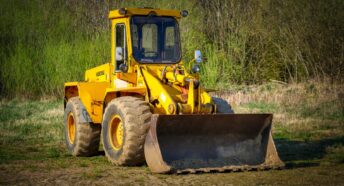Badly designed homes – what can we do?
A new report backed by CPRE has shown just what an impact great housing design can have – and how much poor housing design is still being built.
There’s been fresh interest in the design of new housing in recent years. Historically, the design of new houses and their surrounding environment hasn’t been great. In fact, a 2004-2007 study by the Commission for Architecture and the Built Environment said they found ‘an… unflattering picture of new housing design quality.’
We realised it was time to revisit the design of new homes, especially those in rural areas, to see what good housing design means and to ensure that rural homeowners are getting the chance to live in brilliant places. We worked with campaigners Place Alliance, based at UCL, on a report called A Housing Design Audit for England, and looked at houses all over the country. We’ve found some examples of great design – but a lot that need drastic improvement.
Countryside homes: work to be done
In fact, overall we found that 75% of new housing development shouldn’t have gone ahead due to ‘mediocre’ or ‘poor’ design. Disappointingly, too, we discovered that less affluent communities are ten times more likely to get worse design, even though better design is affordable – and, frustratingly, 94% of developments in the rural areas audited should never have been given approval to go ahead.
It’s clear, then, that rural communities deserve more. Tom Fyans, our campaigns and policy director, said: ‘This research is utterly damning of larger housebuilders and their failure to build the homes our communities deserve. They must significantly raise their game if we’re to create the sorts of places that future generations will feel proud to call home … That’s why significantly improving the quality of design is central to addressing the housing shortage.’
So what makes good housing design, and how can we get better?
Some improvement… but room for more
The report found that in some ways, housing design has improved. Researcher studied 142 housing developments built between 2004 and 2019 from all over England and, overall, they scored relatively highly for safety and security and were also generally successful at including a variety of types and sizes of home.
Well-designed homes have a huge impact on local areas and, of course, on the people that live in them. Professor Matthew Carmona, chair of the Place Alliance, said: ‘Research has consistently shown that high-quality design makes new residential developments more acceptable to local communities and delivers huge social, economic and environmental value to all’.
Good housing design includes elements that we might not immediately think of but that can have a huge impact of quality of life – issues such as well-designed access roads, provision of storage, spaces for bins, suitable car parking provision and local community facilities. In good housing design, architecture is in keeping with the local area and the new developments have character, bring about a sense of place and are energy-efficient and sustainable – including making space for people to walk and cycle.
When these details aren’t thought through, it’s all too easy for developments to become unattractive and unfriendly environments with the potential for damage to health and wellbeing.
Building better
Happily, the report makes some recommendations about how housebuilders and the government can make homes that work much harder for their occupants and communities. Some might surprise you; for example, the research suggests that designing at higher densities is better, as more compact developments tend to be more sensitively designed.
The research also suggests working for a greater connection between the work of those who develop and build highways and those creating new homes. New homes need roads that are designed to create high quality, characterful places, and at the moment these developers simply aren’t as joined up as they need to be.
The report also urges that housebuilders need to be more ambitious about building properties ethically, focusing on developments that prioritise the long-term social wellbeing of their customers and the health of the environment at large. All, in all: there is work to be done by the government – at both local and national level – and by the housebuilders themselves.
CPRE, the countryside charity, has long campaigned for good housing and thoughtful development. We recognise the urgent need for more rural homes to support diverse communities and want to see housing that’s both energy-efficient and fits in with other local buildings. Following the launch of this report, the CPRE national team will meet ministers, shadow ministers and civil servants to talk through the findings and to call for positive change.





